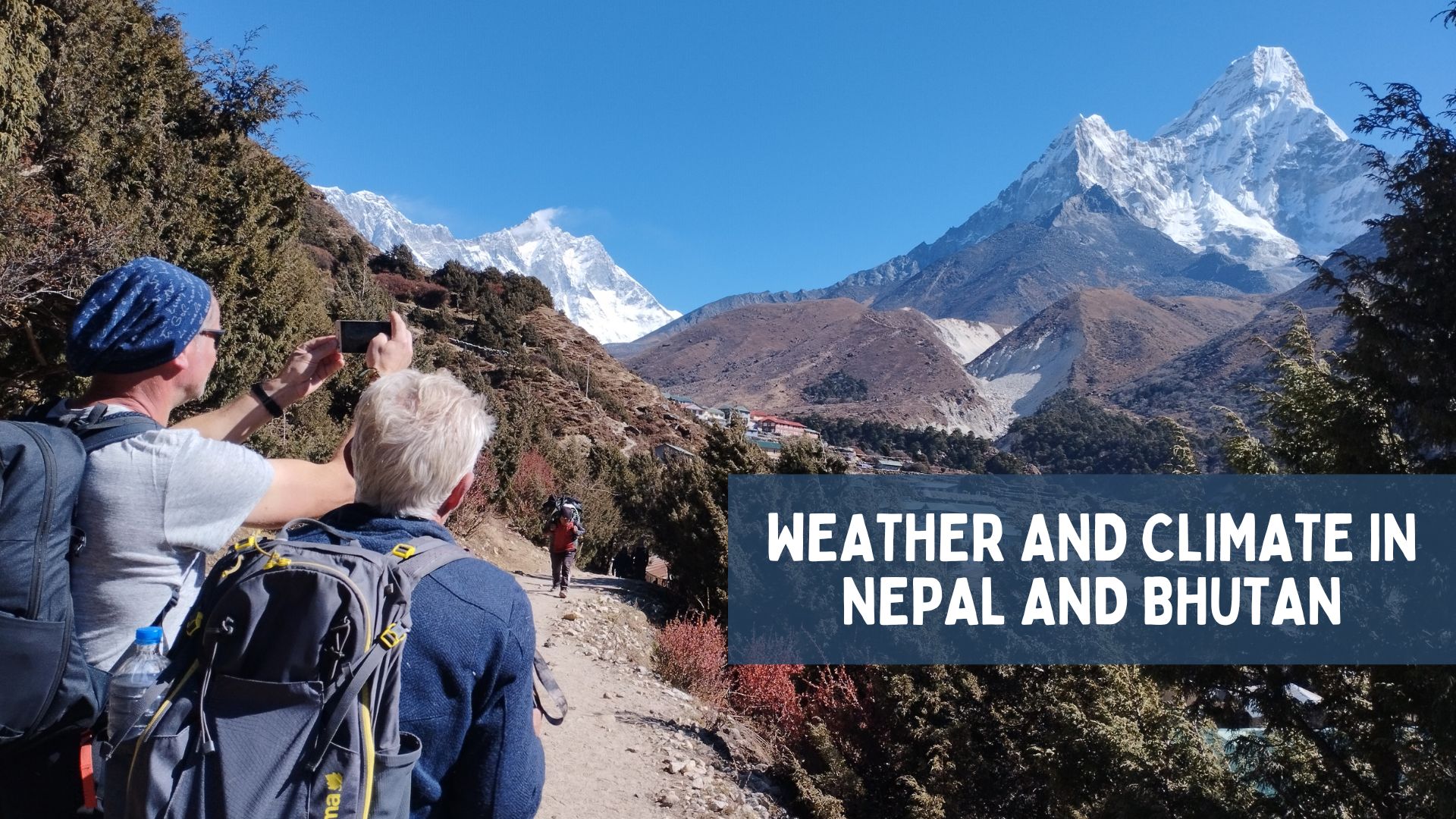Weather and Climate in Nepal and Bhutan
20 Mar 2024 Umesh Paneru

Nepal and Bhutan are both landlocked Himalayan nations that have diverse geography. The topographical differences, lowland elevation, and highland elevation in both nations vary which impacts the weather and climate of these nations. Both nations have four main seasons: Spring (Mar-May), Autumn (Sep-Nov), Summer (Jun-Aug), and Winter (Dec-Feb). Throughout the year, traveling in both nations is possible. But spring and autumn are considered the best seasons to travel in both nations.
Weather and Climate in Nepal
Nepal is a nation that geographically expanded from an elevation of 60m in Terai to 8848.86m in the Himalayas. Mainly there are four seasons in Nepal: Spring, Summer/Monsoon, Autumn, and Winter. It is possible to tour all around the year in Nepal. All seasons have their specialty and offer something to travelers. Weather and temperature are mostly stable in the lower regions during the Autumn and Spring seasons, and as elevation rises the weather and temperature are unstable. City sightseeing or tours are mostly done in the lower regions, so the weather and climate are bearable.
Spring is the best season to travel to Nepal as the weather is stable, flowers blossom, and the temperature is warm. The temperature is generally between 16°C to 23°C in the lower regions like Kathmandu Valley, and Pokhara, and slightly warmer in Chitwan. Autumn is the second-best season to travel to Nepal due to warm and pleasant weather with temperatures between 13°C to 20°C. The skies are also clear offering phenomenal views.
Summer is very sunny and warm and expect heavy rainfall from mid-June to August. Winters are very cold but the day views are clear. In the morning there is fog, and evening also gets colder. Wear appropriate clothes to protect yourself from cold.
Weather and Climate in Bhutan
Bhutan’s weather and climate are affected by its altitude and terrain. Likewise in Nepal, Bhutan also has four seasons: Spring (March to May), Summer (June to August), Autumn (September to November), and Winter (December to February).
Autumn is the best time to travel to Bhutan as the weather is warmer with clear blue skies. Spring is the second best season to travel because of the blooming seasonal flowers. But, the weather can be cloudy, and expect more rain. Several vibrant festivals also occur in this season. During the autumn season, the temperature of Bhutan is 15°C to 22°C while in Spring season, the temperature is between 15°C to 25°C.
Winter is very cold but the skies are clear and suitable for beautiful scenery. In Jan and Feb months, there is a high chance of heavy snowfall which can create a blockade for hiking or trekking. The nights are colder as the temperature drops. Summer is also a monsoon season in Bhutan, so expect light rainfalls. But, the weather is pleasant and warm.
Best time to visit Nepal and Bhutan
Both Nepal and Bhutan have comparable climates, with distinct rainy and dry seasons that coincide. The greatest times to visit these two Himalayan countries are in the spring and fall, from March to May and September to November, though you can go at any time of year depending on what you want to do and where you want to go.
In Nepal and Bhutans Himalayan regions, winter is a season when it gets colder and snowier. While high-altitude treks are frequently available at this time, there are many sites to explore and trek in the lower regions of the country, where the winter is mild and the weather is still pleasant. The monsoon season occurs throughout the summer months, and this is when the majority of the rain falls over the globe. However, even in the middle of the monsoon, there are locations in both Nepal and Bhutan where there is little to no rain and it is still possible to trek or travel.







